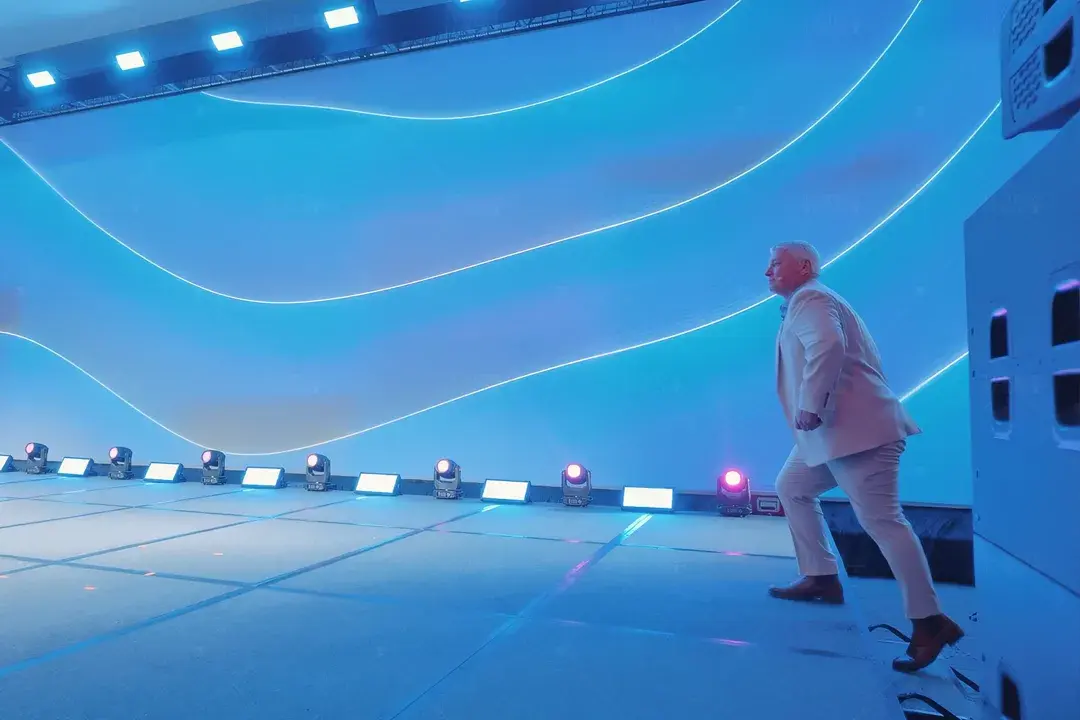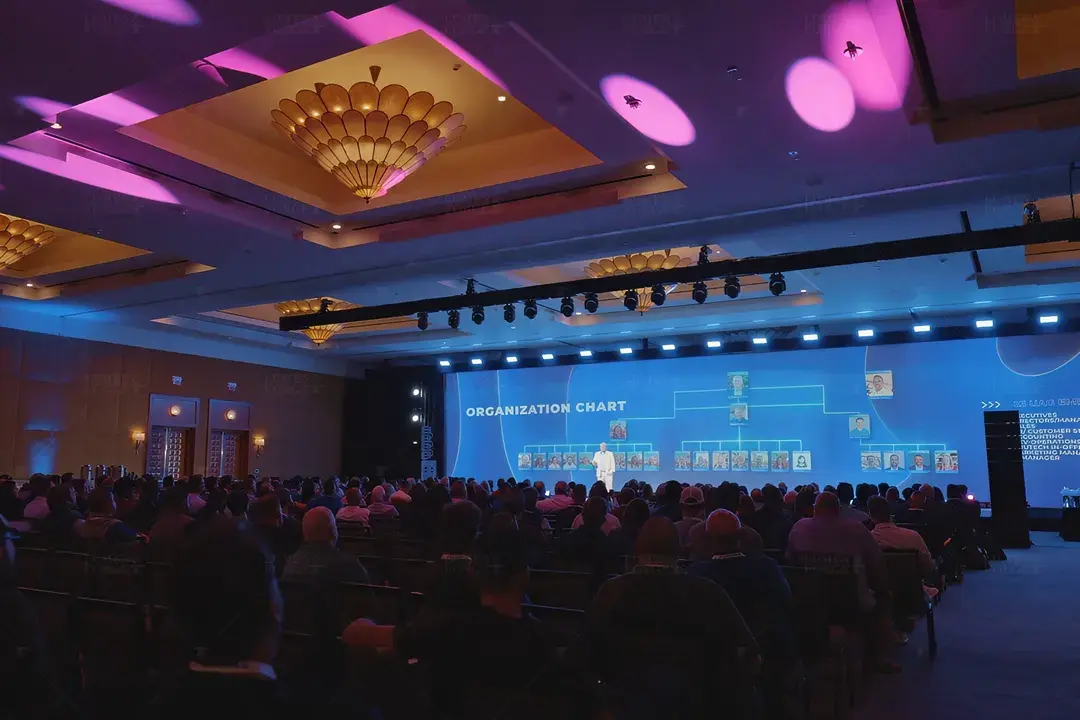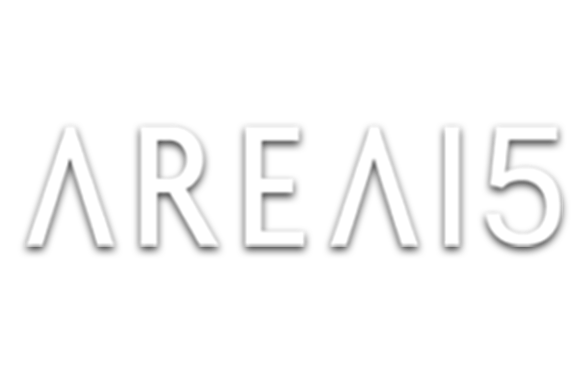The age of the static keynote is over. Audiences no longer come to be told; they come to feel. They want to be inside the story, not seated politely in front of it. A modern stage isn’t a backdrop it’s a living instrument that breathes in sync with the speaker, responds to the crowd, and pulls everyone into a shared current of emotion and meaning.
Turning a keynote stage into an experience means rejecting the idea that communication happens in one direction. It’s not about bigger screens or louder speakers; it’s about building a presence in a world that reacts, transforms, and amplifies the human at its center.
This is not presentation design. It’s experiential architecture. It's performance art fused with technology.

1. Start With Story, Not Screens
The foundation of any transformative keynote is narrative. Before you design a single pixel, ask: What is the emotional arc?
Every stage experience begins like a film: with a script, that plays with the energy, tension, release, and transformation of the spectator. Create a sense of awe and tension to captivate the audience.
- Define your emotional beats. Identify the moments when the story should lift, when it should pause, and when it should strike.
- Build around feeling, not function. Screens and lighting are tools of the trade not the main event; The story is the conductor, without a good story, there is nothing.
- Design for revelation. Whether it’s a product launch, a founder’s address, or a cultural summit, your goal is to make people see something they didn’t before. Whether inside themselves or in the world, the goal is to make everyone feel something profound.
The mistake most productions make is designing visuals to match slides. They are not looking at the “why” behind the slides. Instead, focus on the story and design motion and light to match the intention. The human brain remembers and connects to emotional rhythm, not bullet points.
2. Reimagine the Stage as a Canvas
A stage is not a platform, it's a landscape of emotion.
Walls, ceilings, floors, and air all become surfaces when you think like an architect of experience. Projection mapping, LED volume, and kinetic lighting used properly turn any space into a language. The room itself becomes a character and the story. When you move beyond the rectangle of a screen, every degree of freedom matters:
- Ceilings become constellations or data clouds.
- Floors turn into responsive fields that ripple underfoot.
- Columns and architecture dissolve into dimensional backdrops.
The audience should never know where the stage ends and the story begins. Technically, this means treating the stage as a volumetric environment and learning to play each component as if you're playing the piano. You don’t build one layer, you build multiple, each moving at different speeds and depths, creating parallax and immersion harmonizing together. Physically, it means positioning speakers, lights, and projectors to engage the audience in energy, not just light. The story is everything.
At Lumen & Forge, we call this Spatial Narrative Composition the art of designing physical, digital, and emotional planes so that every sightline becomes part of a living story.
3. Light Is Emotion, Not Illumination
Lighting is not there to show you what’s happening. It illuminates what’s happening in the story. In an experiential keynote, light carries narrative weight. It sets tone, defines movement, and manipulates time. One sweep of light across the stage can move an audience from anticipation to awe faster than a thousand words. Use each cue for a purpose.
- Dynamic Cues: Program lighting that responds to cadence and emphasis, not just cues. Tie colors to the energy of each section.
- Contrast as Storytelling: A single spot in darkness is intimacy. A sudden flood is revelation. Every fade and burst is part of the syntax of experience.
- Integration: Connect lighting to video and audio signals so they breathe together. When visuals flare, sound swells, and light expands, the human nervous system synchronizes as we are designed to get emotionally attached by cues.
Light and sound are the narrators. Treat it like your most powerful performer.
4. Real-Time Tools, Real Human Energy
The modern keynote is a hybrid of stagecraft and simulation. Real-time engines such as Unreal Engine, TouchDesigner, and Notch let you sculpt experiences that react in the moment. They turn visuals into living organisms driven by data, gestures, and performance itself.
Imagine a presenter stepping on stage and the environment awakens to their presence.
Their voice ripples through particles of light. Their motion sends waves across the floor. Data visualizations bloom like living systems behind them. This is not science fiction, it's the new creative literacy. Real-time production collapses the wall between creation and playback. You can change the look mid-show, respond to audience sentiment, or layer new content instantly. It gives teams agility and performers freedom. The best keynotes feel spontaneous because the technology is alive and responsive.

5. The Role of the Audience: From Spectator to Participant
An experience is not complete until the audience completes it. Traditional keynotes that treat attendees as passive receivers of information are the thing of the past. Be experiential, use light and sound as emotion for your keynote. Use the energy of the crowd as an active variable in the equation.
Use sensors, motion tracking, and mobile interactivity to let people shape what unfolds:
- The collective heartbeat of the room could trigger lighting patterns.
- Audience movement might shift camera angles or alter color palettes.
- QR or NFC engagement can unlock personal perspectives or digital takeaways.
Each participant becomes a pixel in a shared canvas. When people see their impact however subtle they feel ownership. They become part of the system, not observers of it. And that ownership translates into memory, connection, and brand resonance that lasts long after the applause.
6. The Architecture of Presence
Physical design defines emotional reality. When planning a keynote as an experience, think of the stage like a theater of empathy. How close do you want your audience to feel? How do you want sound to wrap them? Where do you want their eyes to rest when the moment peaks?
Curvature matters. Circular stages invite inclusion; linear stages project authority. Design based on story and intention.
Height defines power. Elevated stages feel aspirational. Ground-level stages feel intimate.
Material defines memory. Reflective floors double visuals into infinity. Matte textures ground the light and make people feel real.
Even the distance between screen and speaker influences connection. The goal is to make physical geometry serve the emotional geometry of the story.
7. Sound as the Emotional Spine
If visuals are the body, sound is the nervous system. The right audio design doesn’t just support visuals it anticipates them. Low frequencies move through the body, not just the ear. Directional arrays let you paint with space. Ambisonic or binaural mixes can move the listener’s awareness through 360 degrees, syncing their heartbeat with the pace of the story.
Integrate spatial audio early. Let the soundtrack shape pacing, not follow it. The audience should feel like they are inside the music of meaning. Sound is the first sense to engage and the last to fade. It’s what makes a keynote unforgettable even when eyes are closed.
8. Designing for Memory
The ultimate goal isn’t to impress, it’s to imprint. Memory is formed when novelty, emotion, and multisensory cues align. The brain doesn’t remember data, it remembers moments of coherence. A well-crafted immersive keynote is engineered to produce those moments intentionally.
- Anchor each act of the story to a sensory shift: light, motion, or texture.
- Use surprise carefully; it burns itself into long-term memory.
- End with a resonance, not a noise, something that lingers rather than fades.
Think of the stage as a neural amplifier. You’re not delivering content; you’re writing memory into the nervous systems of hundreds or thousands of people simultaneously.
9. The Invisible Infrastructure
Behind every transcendent experience is ruthless precision. Projection studies, lens calibration, power distribution, media server synchronization all must function perfectly for the illusion to feel effortless. This is where engineering becomes art. At Lumen & Forge, we treat every technical parameter throw ratio, latency, signal flow as part of the creative DNA. The smoother the pipeline, the freer the performance. Our philosophy: The guest should never see the work. They should feel the result.
10. The Future: Living Keynotes
The next era of stage experiences is not about content it’s about conversation. Keynotes will evolve into adaptive worlds that sense audience sentiment, adjust visuals in real time, and personalize output per attendee. Imagine entering a space where every seat has its own light field and every person carries a digital twin that grows as they move.
AI-driven tools will modulate pacing based on audience attention. Real-time rendering will make every presentation a one-of-one. Holographic and XR overlays will merge the virtual with the physical so seamlessly that the word “screen” will feel obsolete. The keynote of the future will not be watched, it will be inhabited, felt and experienced.
Conclusion: The Art of Presence
To turn a keynote stage into an experience is to treat it as a living ecosystem, a fusion of light, sound, story, and technology synchronized with human emotion. It’s the highest expression of both art and systems thinking. Every pixel, every note, every beam of light must have purpose. Every silence must mean something. When done right, the audience doesn’t just understand your message; they become it. They walk away changed, still vibrating at the frequency of what they witnessed.
At Lumen & Forge, this is our language. We don’t design stages; we sculpt moments of collective transformation. The tools may evolve, Unreal, TouchDesigner, Disguise, or whatever comes next, but the goal remains eternal: To make people feel like they’ve stepped not into a room, but into a story that recognizes them. Because that’s when a keynote stops being a talk and becomes an experience.
































